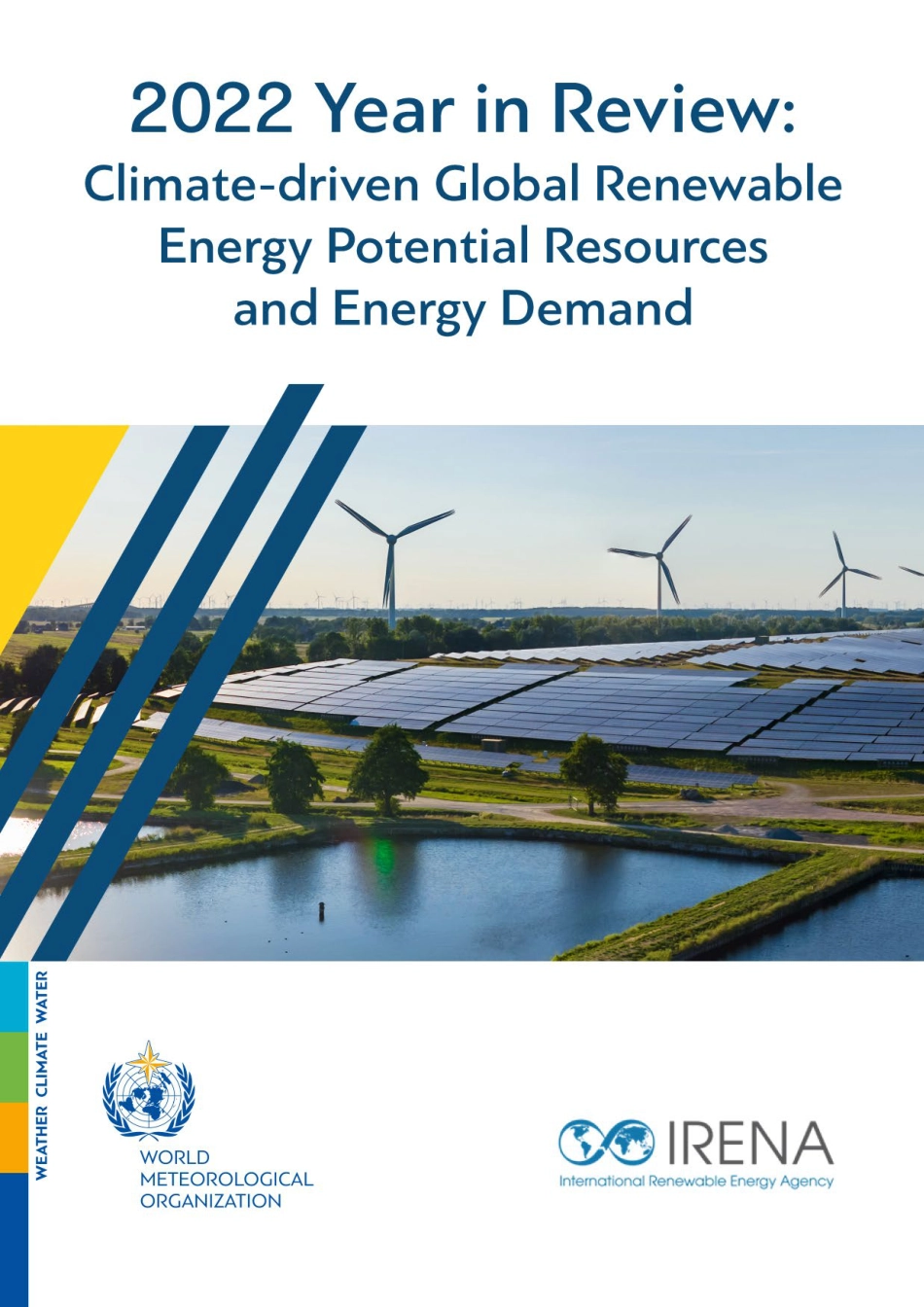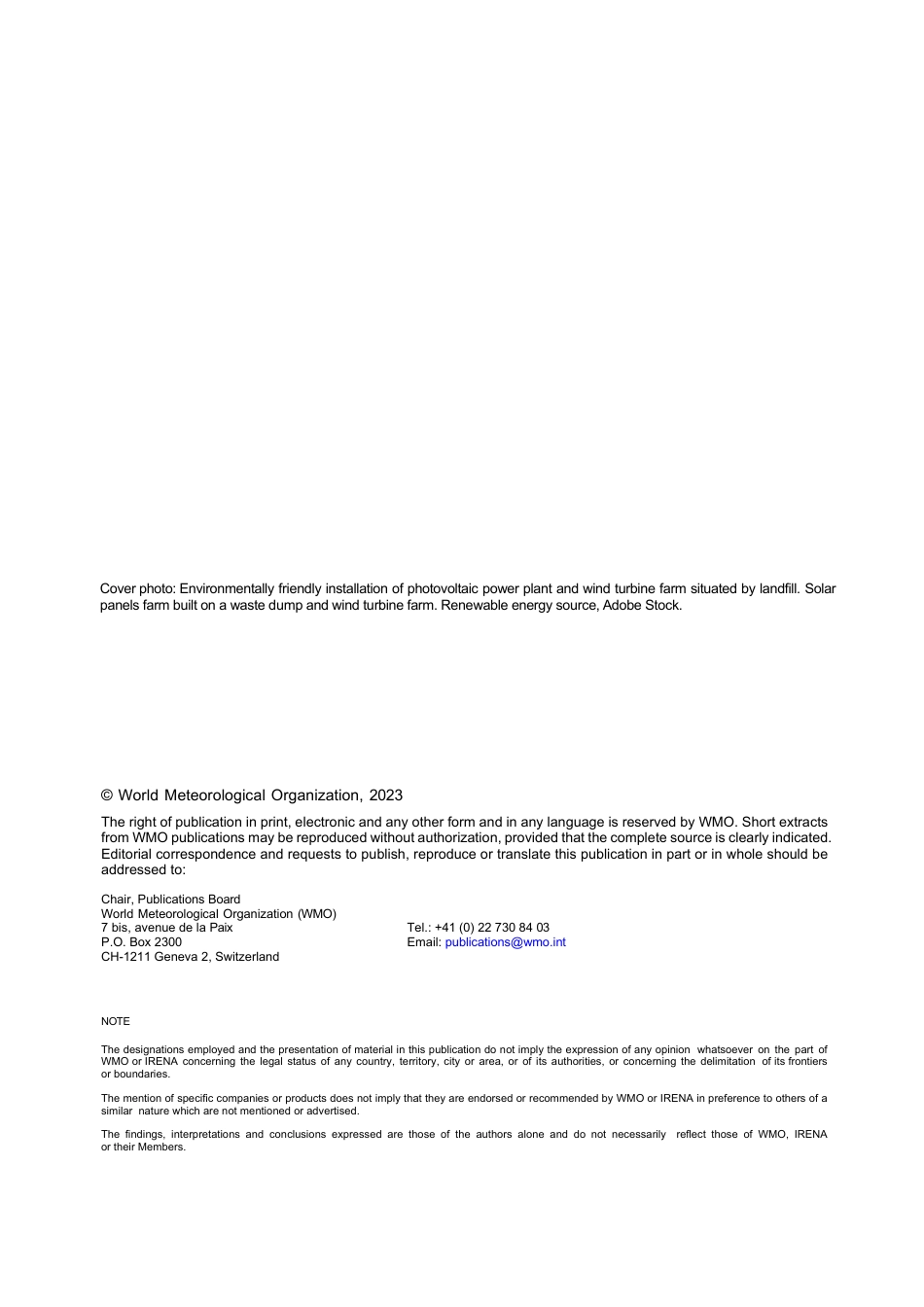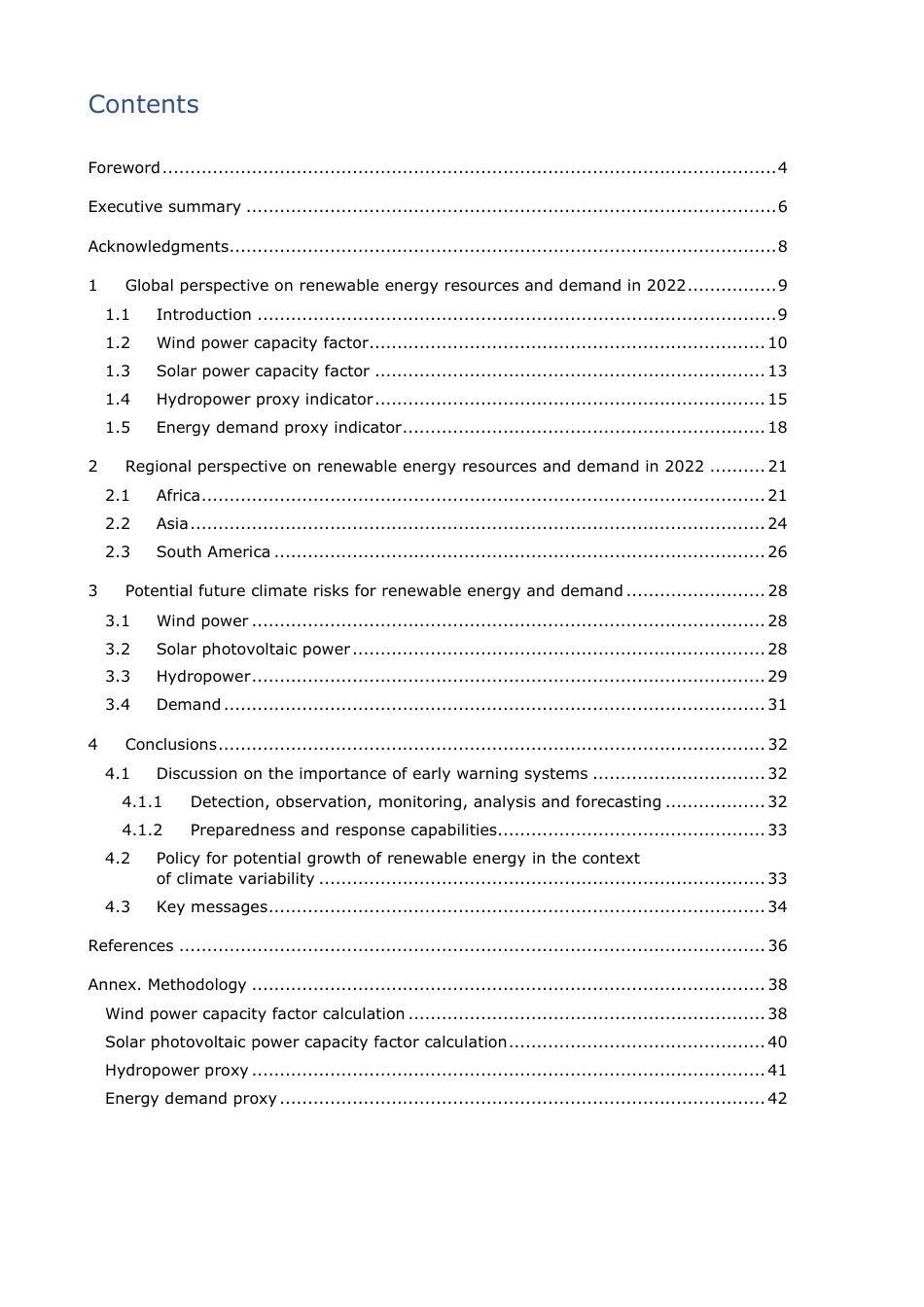Cover photo: Environmentally friendly installation of photovoltaic power plant and wind turbine farm situated by landfill. Solar panels farm built on a waste dump and wind turbine farm. Renewable energy source, Adobe Stock. © World Meteorological Organization, 2023 The right of publication in print, electronic and any other form and in any language is reserved by WMO. Short extracts from WMO publications may be reproduced without authorization, provided that the complete source is clearly indicated. Editorial correspondence and requests to publish, reproduce or translate this publication in part or in whole should be addressed to: Chair, Publications Board World Meteorological Organization (WMO) 7 bis, avenue de la Paix Tel.: +41 (0) 22 730 84 03 P.O. Box 2300 Email: publications@wmo.int CH-1211 Geneva 2, Switzerland NOTE The designations employed and the presentation of material in this publication do not imply the expression of any opinion whatsoever on the part of WMO or IRENA concerning the legal status of any country, territory, city or area, or of its authorities, or concerning the delimitation of its frontiers or boundaries. The mention of specific companies or products does not imply that they are endorsed or recommended by WMO or IRENA in preference to others of a similar nature which are not mentioned or advertised. The findings, interpretations and conclusions expressed are those of the authors alone and do not necessarily reflect those of WMO, IRENA or their Members.Contents Foreword .............................................................................................................. 4 Executive summary ............................................................................................... 6 Ackno...



